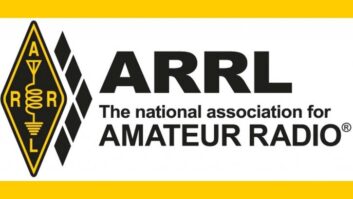Paul McLane is editor in chief.
An FCC staff ruling about ham radio may shed light on the challenges facing those who’d like to see AM radio stations move to spectrum used by TV Channels 5 and 6, just below the current FM band.
Glen Zook had filed a petition asking the FCC to add a “4 meter” radio band, at 70.0–70.5 MHz, to the list of bands authorized for ham radio. But Julius Knapp, chief of the commission’s Office of Engineering and Technology, now has ruled that Zook’s petition “plainly does not warrant consideration” and denied it.
VHF TV Channel 4 operates in the 66–72 MHz frequency band but Zook had argued that “the recent migration of broadcast television stations to primarily UHF frequencies basically eliminates any probable interference to television channels 4 or 5 which otherwise might have occurred.” Knapp at the commission wrote in his rejection ruling that Zook was operating on a faulty premise when he thought broadcasting in that band will diminish or cease.
“Based on data compiled by the Commission’s Media Bureau,” the FCC wrote, “Channel 4 is currently populated by three full-power TV stations, 110 low-power television (LPTV) and TV translator stations, and six Class A TV stations.”
Further, “The Commission also has an ongoing incentive auction proceeding that, among other things, will repurpose a portion of the TV band for broadband operations and repack the remaining TV stations into a smaller frequency range.” That incentive auction, the FCC continued, does not eliminate use of TV Channel 4, and anticipates voluntary options for full-power and Class A TV stations, “including relocation from a UHF channel to a VHF channel and relocation from a high VHF channel (Channels 7–13) to a low VHF channel (Channels 2–6).” (My emphasis added.) Thus, the commission wrote, Channel 4 could become even more active for broadcast than it is now.
Further, “Even if such an outcome is not realized, there is no reason to expect that full-power, Class A and LPTV stations will not continue to make use of an available television channel,” the commission wrote.
This thinking may have relevance in the AM revitalization debate, though as I noted, AM was not mentioned in this case.
Also note this text in the FCC’s response: “Given the complexity of the incentive auction proceeding, we also conclude that it would not serve the public interest to further complicate that unique undertaking by proposing to introduce a new service into the broadcasting frequencies at this time. … There is no reason why we would want to introduce such uncertainty into the band.”
And the FCC wrote: “As with Channel 4, TV Channel 5 will continue to be used for broadcast purposes. Fixed and mobile services will likewise continue to operate in the frequencies between the two television channels.”
I’m reading tea leaves here. I don’t know what the commission might do when it ultimately acts on AM “revitalization.” But the thinking laid out above doesn’t sound like an FCC staff getting ready to move AM stations into Channels 5 and 6.
What do you think?






